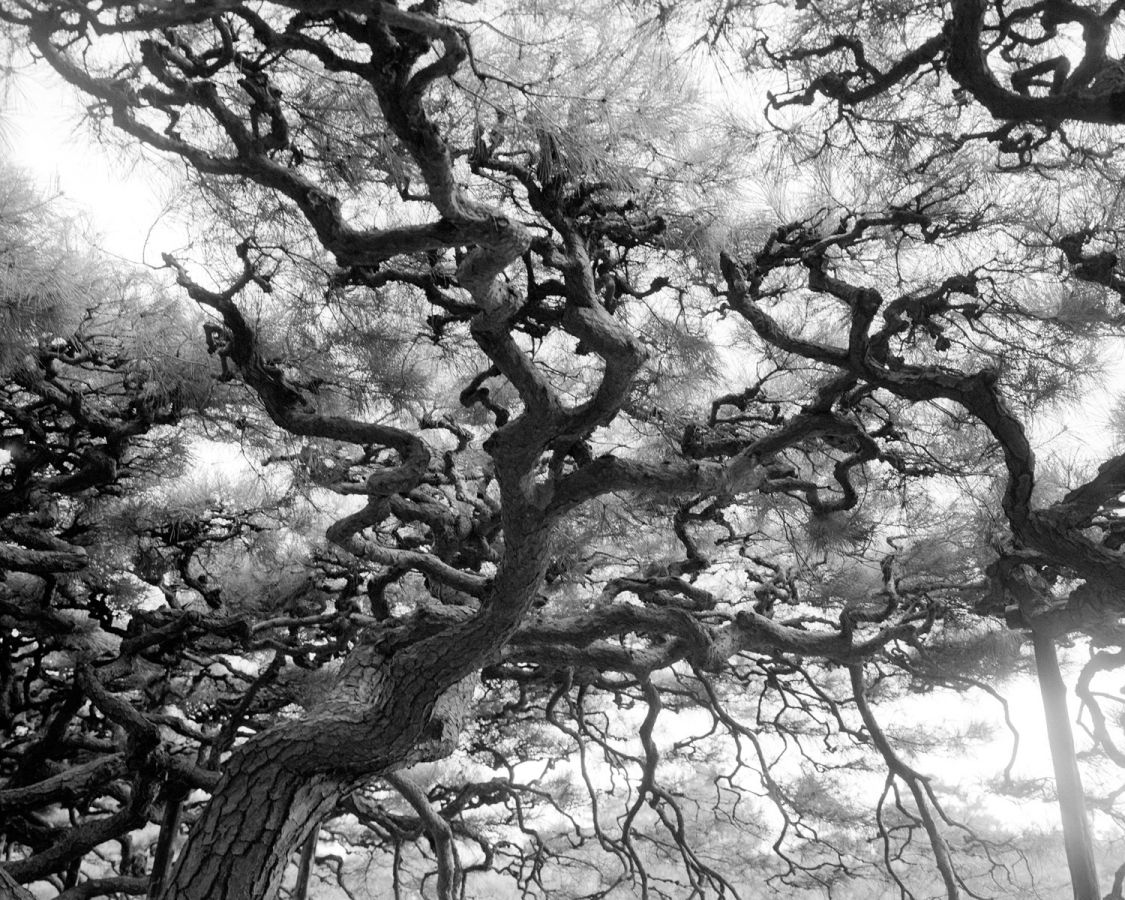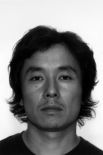The photographs from the Forest series are the results from your exploration of a specific forest. Where is this forest located and what did attract you there ? This
forest is a famous forest in Japan; it is protected by UNESCO. It has
survived because of its remote location and it holds one of the most
ancient living plants on earth – a tree that is said to be 7,000 years
old. I was drawn into this forest because of a brief experience in the
Amazon years ago. The forest is such a contrast to life in New York City
in sound, but there is this serene sort of chaos in a forest that is
similar to a city, even more so. Every living thing is individual, but a
part of a larger, connected cycle.
In
parallel to the forest series you have photographed urban gardens which are
imbued with a living breath, the leaves of the shrubs seem to rustle and
vegetation is climbing everywhere in a chaotic way that one does not
expect at the foot of buildings. What is the story behind them?I
photographed abandoned lots in Brooklyn for many years. They were part
of my own environment, as I lived in one of these neighbourhoods. The
weeds grew tall enough to camouflage some of the
garbage and street
cats. Then one day, it seemed as though these empty lots morphed into
“luxury condominiums”. Parts of Manhattan experienced this same
transformation, particularly neighborhoods historically considered
low-income, like Harlem and the Lower East Side. Neighborhoods that
consequentially drew creative people of all sorts who had a hand in
creating community gardens. The artists were the people who were able to
envision that abandoned lots could become gardens. Most of the
abandoned lots became buildings, but others survived and were
transformed into green oases as gardens. Development has always been at
odds with the nature. Development seeks to destroy trees, grass and
weeds, but these photographs are evidence that sometimes nature can
prevail.
By these two series, as well as in the photograph Garden, Takamatsu, you deal with two sides of the natural
state, one in an urban environment and the other in the wild, and yet
these two series seem to speak with a single voice, that of a free and
powerful nature. How did you tackle these two environments?The
experiences between the two series are similar. The forest is an ancient
community of nature and being there makes me see things as if I were
seeing a piece of art or a wild animal. Both are very precious to me; it
is as if I was visiting that personal fairy tale of what real nature
offers and we as humans can do.
Limited edition, numbered and signed.

 Japanese photographer Yasuyuki Takagi, now based in New York, explores Japan’s ancient forests and Harlem’s community gardens with equal ease. In the wild, on an island in southern Japan, or between two skyscrapers in New York, the nature Takagi photographs is powerful and impervious to the passing of time. The tree trunks affirm their knotted architecture, moss covers the ground, and leaves gently caress the air, filled with muffled light. The photographer sometimes uses black and white, for the distance it allows him to place between him and reality, and beyond that the abstraction and timelessness it emanates, and at other times colour, for its capacity to convey the fantastical manifestations occasionally witnessed in woodland environments.
Japanese photographer Yasuyuki Takagi, now based in New York, explores Japan’s ancient forests and Harlem’s community gardens with equal ease. In the wild, on an island in southern Japan, or between two skyscrapers in New York, the nature Takagi photographs is powerful and impervious to the passing of time. The tree trunks affirm their knotted architecture, moss covers the ground, and leaves gently caress the air, filled with muffled light. The photographer sometimes uses black and white, for the distance it allows him to place between him and reality, and beyond that the abstraction and timelessness it emanates, and at other times colour, for its capacity to convey the fantastical manifestations occasionally witnessed in woodland environments. 